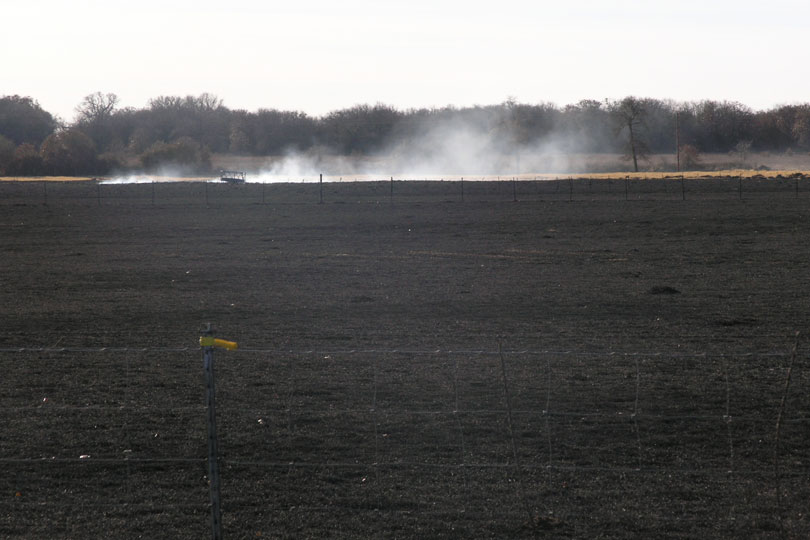By Jennifer Dorsett
Field Editor
Wildfires are increasing across the state as drought intensifies in some areas and accelerated drying of native grasses and forage occurs in others.
Typical summer drying has accelerated this year, according to Brad Smith, Texas A&M Forest Service Predictive Services department head. Rainfall predictions for the next month-and-a-half indicate the situation is likely to continue.
Translation? A severe summer wildfire season could impact the Lone Star State.
“The dryness we are currently seeing across portions of the state is generally what we would be experiencing in mid- to late-July,” Smith said. “The drought that will carry over from the spring into the summer and the emerging drought that is developing in June have initiated an early start to the summer fire season. Early summer drying in June also introduces the possibility of experiencing a severe late-summer fire season.”
In June, Texas A&M Forest Service and local fire departments have responded to 90 wildfires that burned a total of 21,692 acres. Smith noted many of the recent wildfires can be attributed to equipment use, welding, debris burning and roadside ignitions.
But there are steps homeowners and landowners can take to reduce these instances and potentially prevent the loss of valuable equipment, livestock, homes, pets and most importantly, save lives.
“Texas is experiencing an uptick in wildfire activity across most of the state, and it’s easy to think that a wildfire won’t impact you until you see the smoke on the horizon,” Kari Hines, Texas A&M Forest Service Firewise coordinator, said. “Now is the time to prepare your house and property to make them wildfire resilient. Create an evacuation plan for your family that includes pets and livestock. Look for the buildup of dead and dry vegetative material around your house, the driveway and other important buildings, as this is where embers can gather and start fires.”
Hines encourages Texans to clean gutters and to keep lawns mowed and watered. Other preventative tips include removing any items stored under decks or porches and to keep firewood a minimum of 30 feet from homes or other buildings.
Texas A&M Forest Service also asks residents to postpone outdoor burning until conditions improve.
While driving a vehicle, avoid parking and idling in tall, dry grass as catalytic converters can get hot enough to ignite grasses. Avoid setting hot chainsaws and gas-powered tools, such string trimmers or other yard equipment, in dry grass.
When pulling a trailer, attach safety chains securely. Loose chains can drag and cause sparks, which ignite roadside fires.
It’s also imperative, especially for rural residents, to ensure home addresses are visible from the road so fire departments and other first responders can locate the home quickly in an emergency.
If a wildfire is spotted, people should contact local authorities immediately. A quick response can help save lives and property, Hines said.
In 2017, Texas Panhandle farmers and ranchers lost an more than $21 million when three fires scorched nearly half a million acres.
Click here for more information, including the current fire danger status in Texas.

